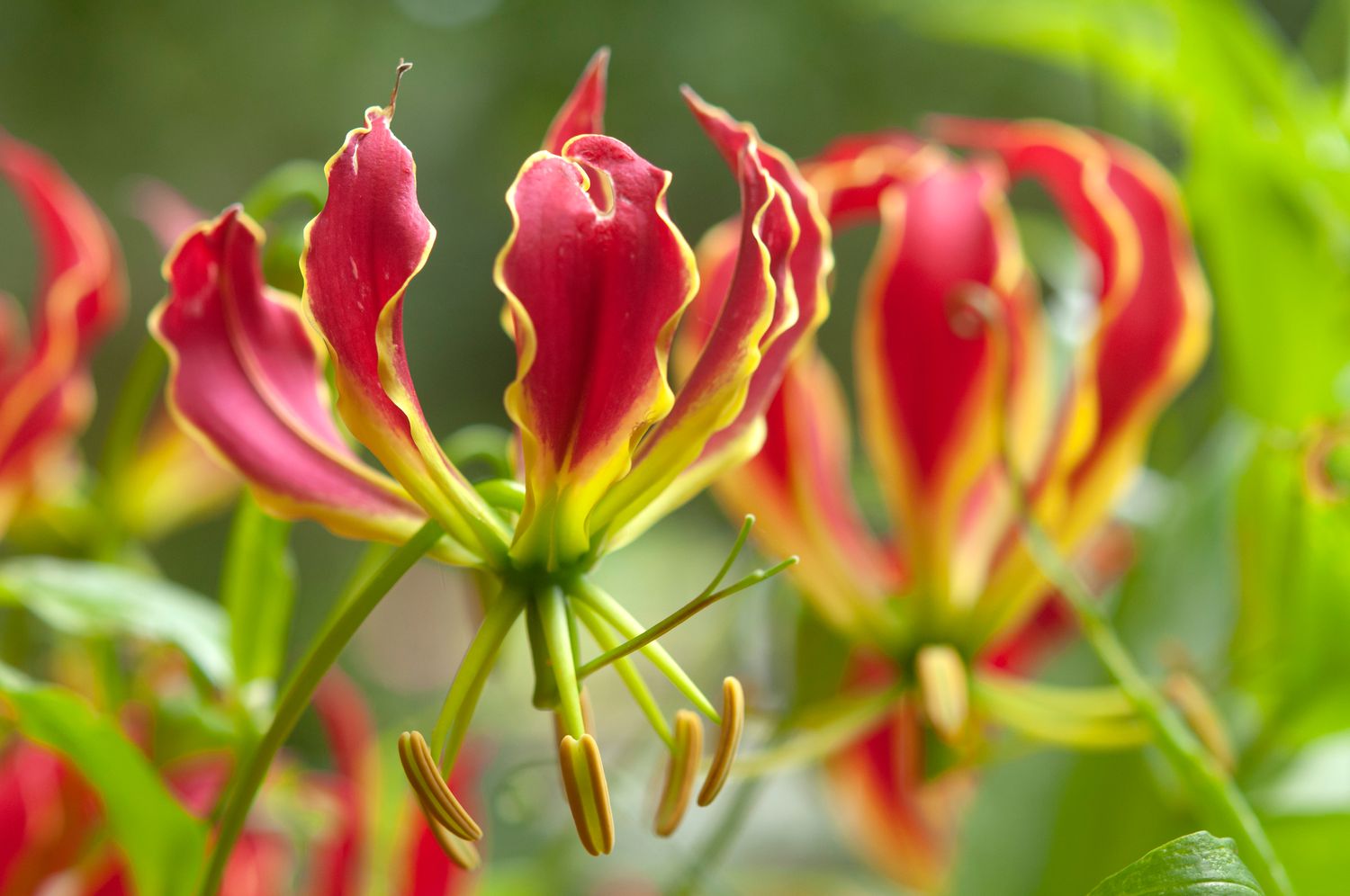
The Gloriosa Lily, also known as Gloriosa superba, is a captivating flower that has been mesmerizing plant enthusiasts for centuries. With its unique appearance and vibrant colors, it is no wonder why it is often considered the star of the garden. But did you know that there is more to this stunning flower than meets the eye? In this article, we will uncover 11 surprising facts about the Gloriosa Lily that will leave you amazed and intrigued. From its fascinating origins to its medicinal uses, prepare to dive into the world of this extraordinary plant. So, let’s embark on a journey of discovery and unlock the secrets of the Gloriosa Lily.
Key Takeaways:
- Gloriosa Lily, also known as Flame Lily, is a stunning climbing vine with toxic properties. It symbolizes pride and glory, attracts pollinators, and is a low-maintenance plant. It’s also a rare and endangered species.
- The vibrant Gloriosa Lily, national flower of Zimbabwe, has medicinal uses and resembles a flame. It’s easy to grow and can be propagated from seeds or tubers. Conservation efforts are underway to protect this beautiful flower.
Gloriosa Lily is also known as Flame Lily
The Gloriosa Lily, scientifically known as Gloriosa superba, is a stunning flowering plant that is commonly known as Flame Lily due to its vibrant red and yellow petals. This unique flower is native to tropical regions of Africa and Asia.
It is a climbing vine
One interesting fact about the Gloriosa Lily is that it is a climbing vine. It uses its tendrils to grasp onto nearby structures and can grow up to 6 feet in height. This makes it a popular choice for trellises and fences in gardens.
It has toxic properties
While the Gloriosa Lily is known for its beauty, it is important to handle it with caution. The plant contains toxic compounds, particularly in its roots and tubers. Ingesting any part of the plant can lead to symptoms such as vomiting and diarrhea.
The flower resembles a flame
As its name suggests, the Gloriosa Lily has flowers that resemble flames. The petals are elongated and have a wavy appearance, with a combination of vibrant red and yellow colors. This unique shape and coloration make it a striking addition to any garden.
It is a symbol of pride and glory
In many cultures, the Gloriosa Lily holds significant symbolism. It is often associated with themes of pride, glory, and admiration. The flower’s fiery colors and graceful form represent strength and resilience.
It is a national flower
The Gloriosa Lily holds the prestigious title of being the national flower of Zimbabwe. This further emphasizes its cultural significance and its representation of national pride.
It is used in traditional medicine
The Gloriosa Lily has been used in traditional medicine systems for centuries. Various parts of the plant, such as its tubers and leaves, are believed to have medicinal properties. It is used to treat ailments such as arthritis, gout, and even snake bites.
It attracts butterflies and bees
The vibrant colors and nectar-rich flowers of the Gloriosa Lily make it a magnet for pollinators. Butterflies and bees are particularly attracted to its blooms, making it a valuable plant for supporting pollinator populations.
It is a low-maintenance plant
The Gloriosa Lily is relatively easy to grow and maintain. It thrives in well-drained soil, full sun, and warm climates. It also requires minimal watering once established, making it a suitable choice for gardeners of all skill levels.
It can be propagated from seeds or tubers
If you want to grow your own Gloriosa Lily, you can do so by either starting from seeds or tubers. Seeds can be sown in pots or directly in the garden, while tubers can be divided and planted to create new plants.
It is a rare and endangered species
Despite its beauty, the Gloriosa Lily is considered a rare and endangered species in the wild. Habitat loss and excessive harvesting have greatly reduced its population in its native regions. Conservation efforts are underway to protect and preserve this stunning flower.
Gloriosa Lily's stunning beauty and intriguing characteristics make this climbing vine a fascinating subject. From its vibrant flame-like appearance to medicinal properties, Gloriosa Lily continues to captivate plant enthusiasts and nature lovers alike. If you found these 11 surprising facts about Gloriosa Lily intriguing, wait until you discover even more astonishing details about this rare and endangered species. Uncover the mysteries behind Gloriosa Lily's unique climbing method, learn how it symbolizes pride and glory in different cultures, and explore the secrets of its low-maintenance care requirements.
Was this page helpful?
Our commitment to delivering trustworthy and engaging content is at the heart of what we do. Each fact on our site is contributed by real users like you, bringing a wealth of diverse insights and information. To ensure the highest standards of accuracy and reliability, our dedicated editors meticulously review each submission. This process guarantees that the facts we share are not only fascinating but also credible. Trust in our commitment to quality and authenticity as you explore and learn with us.
